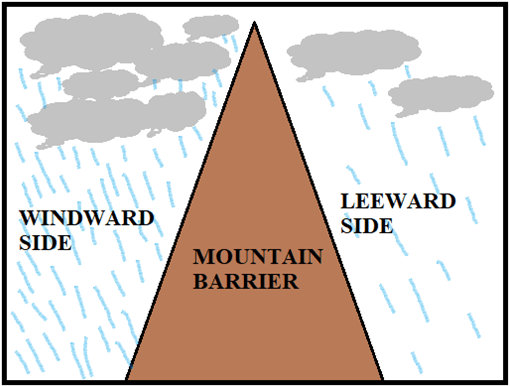This set of Engineering Hydrology Multiple Choice Questions & Answers (MCQs) focuses on “Precipitation”.
1. What is the size of a raindrop?
a) Greater than 8mm
b) Between 0.5mm and 6mm
c) Less than 0.5mm
d) Between 8mm and 10mm
View Answer
Explanation: Rainfall represents precipitation in the form of water droplets. The size of a raindrop is between 0.5mm and 6mm. The size of drizzle is less than 0.5mm. The size of hail is greater than 8mm.
2. Which is not a form of precipitation?
a) Hail
b) Water vapour
c) Snow
d) Drizzle
View Answer
Explanation: Hail, snow and drizzle are different forms of precipitation. Water vapour is obtained when water from the surface of Earth evaporates into the atmosphere. So, water vapour is not a form of precipitation. Other forms of precipitation are rain, sleet and glaze.
3. What is the unit of intensity of rainfall?
a) cm
b) cm*hr
c) cm/hr
d) hr/cm
View Answer
Explanation: Intensity of rainfall is defined as the amount of rainfall occurring during a certain period of time. It gives the depth of rainfall per unit duration. Its unit is cm/hr.
4. What is sleet?
a) Water vapor only
b) Thin layer of ice
c) Rainwater containing some solid particles
d) Water droplets of larger diameter
View Answer
Explanation: Rainwater containing some solid particles is known as sleet. When rainwater comes in contact with the ground surface having temperature 0 Centigrade then it will form a thin layer of ice above the ground surface it is called Glaze. When water droplets are greater than 6mm it is called Hail.
5. What is the intensity of moderate rain?
a) Less than 2.5mm/hr
b) Between 2.5mm/hr – 7.5mm/hr
c) 3.5mm/hr
d) Greater than 7.5mm/hr
View Answer
Explanation: Moderate rain has an intensity of 2.5mm/hr – 7.5mm/hr. Light rain has an intensity that traces to 2.5mm/hr. Heavy rain has an intensity greater than 7.5mm/hr.
6. What is the average density of snow?
a) 0.06 g/cm3
b) 0.17 g/cm3
c) 0.15 g/cm3
d) 0.1 g/cm3
View Answer
Explanation: Snow consists of ice crystals that combine to form flakes. When the snow is fresh it has an initial density ranging between 0.06 g/cm3 and 0.15 g/cm3. The average density of snow is 0.1 g/cm3.
7. What is meant by Front?
a) Hot air mass
b) Cold air mass
c) Interface between two distinct air masses
d) Adiabatic expansion of hot air mass
View Answer
Explanation: Front is the interface between two distinct air masses. When hot air mass and cold air mass meet, the hot air mass moves over the cold air mass. The hot air mass moves upwards and expands adiabatically.
8. What type of rainfall is depicted in the following diagram?

a) Frontal rainfall
b) Cyclonic rainfall
c) Orographic rainfall
d) Convective rainfall
View Answer
Explanation: The diagram depicts orographic rainfall. The moist air masses move upwards towards higher altitudes. It gets cooled, condensed and results in precipitation. Due to mountain barrier, the windward side experiences heavy rainfall and leeward side experiences less rainfall.
9. The type of rainfall which occurs due to localized heating of air is called as _____________
a) Convective rainfall
b) Cyclonic rainfall
c) Orographic rainfall
d) Frontal rainfall
View Answer
Explanation: An air mass surrounding the cooler air gets heated up due to localized heating. Then this warmer air rises upwards. Depending on the moisture, thermal and other conditions, light showers to heavy rainfall occurs. This type of rainfall is called convective rainfall.
10. What is the areal extent of convective rainfall?
a) Diameter of 20km
b) Diameter of 15km
c) Diameter of 10km
d) Diameter of 8km
View Answer
Explanation: Depending upon the moisture, thermal and other conditions, light showers to heavy rainfall is observed in case of convective rainfall. This type of rainfall is limited to a small area. The areal extent of convective rainfall is about 10km in diameter.
More MCQs on Precipitation:
- Precipitation MCQ (Set 2)
- Precipitation MCQ (Set 3)
- Precipitation MCQ (Set 4)
- Precipitation MCQ (Set 5)
Sanfoundry Global Education & Learning Series – Engineering Hydrology.
To practice all areas of Engineering Hydrology, here is complete set of 1000+ Multiple Choice Questions and Answers.
If you find a mistake in question / option / answer, kindly take a screenshot and email to [email protected]
